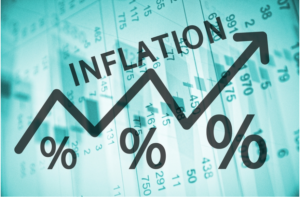JPMorgan konstaterer, at aktiekurserne målt i P/E-værdier er kommet nd på niveau med priserne under finanskrisen, og derfor er tiden nu inde til langsigtede investeringer, ikke mindst i emerging markets. Priskløften mellem de højeste og laveste prissatte aktier er steget dramatisk de seneste år, så der nu er enorme discount-muligheder. Men trods kursfaldene er mange virksomheder og sektorer stadig svage med store gældsposter, og de vil få det svært i de kommende måneder. En analyse af selskaber og sektorer er derfor vigtigere end nogensinde.
Uddrag fra JPMorgan:
Opportunities
Within markets, the gap in valuations between high- and low-priced stocks has been widening steadily over the past three years, and that process greatly accelerated in the past month. Value stocks sold off sharply, wiping out the all the gains of the last five years.
This leaves many companies in the industries that make up the bulk of value indices (industrials, consumer cyclicals, energy and financials) trading at enormous discounts to the overall market. In fact the gap between low- and high-priced stocks has reached record levels, as the latter have proved relatively resilient in the last few weeks. (EXHIBIT 2)
The market’s cheapest stocks are now trading at lower valuations than they did in the depths of the 2008 financial crisis
EXHIBIT 2: AVERAGE FORWARD P/E MULTIPLES

Source: J.P. Morgan Asset Management; data as of March 2020.
During our Equity Quarterly discussions last week, almost all of our portfolio managers expected attractive returns over the next few years from this starting point.
Despite the magnitude of the downturn that is just beginning, the combination of highly negative sentiment and attractive valuations makes this a rewarding time to invest for the long run, in our view. After the rapid sell-off, equity markets look very reasonably valued to us—and, in many cases, downright cheap.
Our favored emerging markets measure in time of stress—the price/book ratio–has fallen to levels consistent with those reached in the depths of most previous crises, if not quite matching the lows of 1998.
European and Japanese stocks are trading at the lowest multiples seen in a long time. And large cap U.S. stocks are much less fully priced now, if still at a premium to other markets (which we think is well deserved). All in all, our portfolio managers around the world do believe that patient investors should find this to be a good entry point for equity investment.
Earnings and cash flows will undoubtedly fall in the months ahead, but the comparisons of value with other investments are also striking. In Europe, for example, we think stocks currently have a cash flow yield close to 7%, compared with 2% on offer from corporate bonds and negative yields on much of the region’s government debt.
In U.S. equities, more than 70% of the companies in the S&P 500 index carry a dividend yield higher than 10-year U.S. Treasury debt, a historical high. Yes, there will be dividend cuts, but dividends these days are sourced from a very broad array of companies, with technology the biggest single contributor by sector, so the comparison is still valid, in our view. There is plenty of income as well as value to be found in today’s equity markets.
Value stocks
We have had many discussions about the opportunity in value stocks. The compensation for taking risk here seems very generous; in our work the spread between high and low priced stocks is as wide as at the peak of the New Economy bubble in early 2000.
But this is a very different situation. Back then, the perceived winners were very, very expensive. Now, faster-growing stocks look reasonably priced in absolute terms, but the lowest price stocks are very low priced indeed.
Many companies in this cohort of the market will face a very difficult time in the quarters ahead. Balance sheets across large parts of the classic value sectors are more stressed than in the last crisis, with the notable exception of financials, where capital reserves are much stronger. A large number of fundamentally weak companies in this cohort have borrowed heavily in recent years when interest rates were low and liquidity ample.
One lesson of 2008–09 was that financial strength matters a great deal in adverse economic conditions, and companies with weak balance sheets and impaired cash flows are likely to find the next few months especially difficult to navigate without lasting damage to the value of their equity.
Industry- and company-level research is thus critical in determining where and when to take risk, and portfolio positon sizing matters a lot too. For example, the energy sector’s problems seem deeper and longer lasting, and bargain hunters here need to be very careful indeed. In the broader industrial space, we can find good companies with operating leverage but reasonable balance sheets; they tend not to be the very cheapest stocks but may well make better investments with so much of the downturn still ahead of us.
Many of our portfolio managers also see opportunities to invest in better quality companies at more favorable prices after recent declines, with every area of the markets more attractively priced now.








